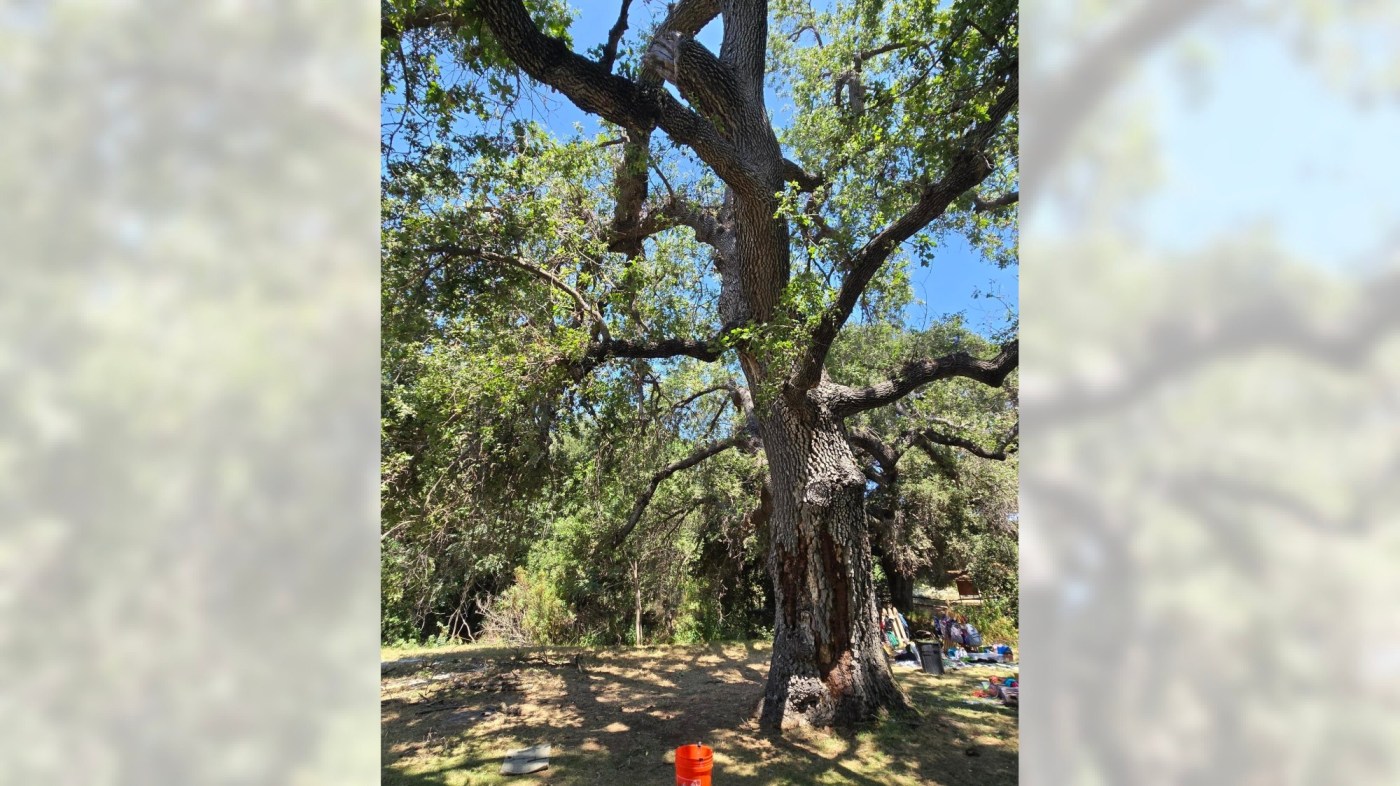An employee with a tree care company warned of decay in a large oak tree at King Gillette Ranch just a day before a branch broke and killed an 8-year-old boy at summer camp in Calabasas, according to text messages obtained by Southern California News Group through a California Public Records Act request.
“It is somewhat concerning seeing all the decay at the trunk,” the employee, identified in the records as Gilbert, wrote on July 8. “It would be wise to thin the canopy and alleviate end weight at a minimum to mitigate the risk.”
The next day, July 9, Lamar McGlothurn, 8, was attending Camp Wildcraft at the Calabasas park when the large branch fell, striking him and several others. He died of blunt force crush injuries, according to the Ventura County Medical Examiner.
The other victims included an 11-year-old girl airlifted to a hospital with a broken leg, a 5-year-old boy with a head laceration, a 22-year-old man with bruises to his head and arms, and a 73-year-old man with a concussion.
It is unknown whether the tree was marked or taped off before the collapse. Representatives for the Mountains Recreation and Conservation Authority, the agency that manages King Gillette Ranch, either declined to be interviewed or did not respond to requests for comment on Thursday.
Camp Wildcraft co-director Shari Davis also declined to comment.
Jill Ettinger, whose daughter Imogene had been a junior counselor at Camp Wildcraft that day, said in an earlier interview that camp staff told them about a branch that had fallen from the tree a week earlier. But the camp continued to gather beneath it each day until dismissal on July 9, Ettinger said.
It is unclear whether the conservation authority had confirmed to camp administrators that the tree was safe to gather under, or if the camp directors were aware of the concerns about decay.
Ettinger also said on Aug. 14 that despite filling out an intake form for trauma counseling offered to campers shortly after the accident, no one has contacted her family.
The newly released records show that on July 2, Scott Hughes, listed as a park manager/maintenance supervisor at the conservation authority, sent an image of a broken branch on the tree to another employee whose identity could not be confirmed. The branch, not fully detached, was about two feet in diameter at the break.
“Need dead wood and lightening of limbs too,” Hughes wrote.
Additional messages indicate that personnel from Jose Gomez Tree Care were expected to arrive that day to evaluate the tree.
The next morning, Hughes emailed Barbara Collins, the conservation authority’s deputy chief of developed resources, confirming that the tree had been serviced.
“Crew was here at 7a. Have left, all finished,” Hughes wrote.
Collins forwarded the email to another authority employee, Matthew Ribarich.
“Want you to be aware of this,” she wrote. “This is that oak at the front of the park, side lawn across from pond that you are watching. Pics show the growth on the trunk that you are watching. Don’t know if this limb cracking has to do with the health of the tree, so thought I’d let you know.”
Decay weakens a tree’s structure, reducing the strength of trunks and branches and making them more likely to fail during wind, storms, or other environmental stress, according to the University of California’s Agriculture & Natural Resources division.
At around 3:30 p.m. on July 8, an employee who referred to himself as “Matt” texted Gilbert to ask whether he had been out to King Gillette Ranch to work on the tree the week before. Gilbert responded that he had, but wasn’t able to inspect the branch. He said the night before crews arrived on July 3, the branch broke and took out a large limb it had been resting on, before adding his concerns about decay.
A 2018 tree risk assessment of King Gillette Ranch by Jan C. Scow Consulting Arborists found that many large trees on the property had structural defects. At least one oak was rated at “moderate” risk of failure, while several other trees on the property were rated “moderate” or “high” risk. The report recommended measures such as end-weight reduction, crown reduction, and, in some cases, restricting access beneath certain trees.
“Of course in many other instances where we have recommended significant pruning this could also be avoided by fencing off public access,” the report read. “When safety is a concern, there are two basic choices: remove target(s) from under the tree or remove all or parts of the tree that may fail.”
It is not known whether the tree involved in the July 9 incident was one of those evaluated in the 2018 assessment, nor whether it had undergone any hazard mitigation prior to the collapse.
The authority announced Thursday, Aug. 14, that in addition to the ongoing investigation by the Los Angeles County Sheriff’s Department, the municipal law firm Richards Watson and Gershon will conduct its own independent review into the branch collapse. The firm will examine the tree, review policies and procedures, and interview employees, campers, suppliers and natural resource specialists.
